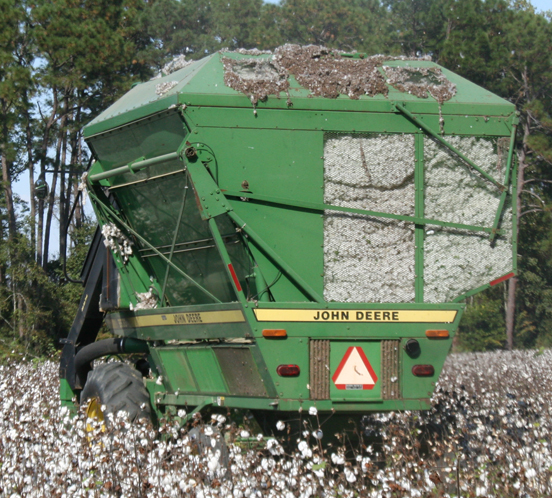Improved crop conditions across the nation have played a major role in driving cotton prices down dramatically over the past four months, says a University of Georgia economist.
Since early May, when 2014 cotton was selling for more than 80 cents per pound, the price of cotton has dropped 18 cents, or about 20 percent. It is now well below the 80-cent barometer that UGA Extension agricultural economist Don Shurley believes all farmers strive for to cover their production costs.
“Let’s remember that we’ve had two or three years of consecutive drought situations in Texas, plus the fact that we’ve had two good years where China was buying a lot of cotton and building stocks. That combination led to some real good prices — 80, 85 cents or better,” Shurley said. “This drought situation in Texas is much relieved. The crop conditions are much better than they have been in previous years.”
Some 17.5 million bales of cotton are expected this year, up 46 percent from last year’s 12.9 million bales, Shurley said.
An improved crop means supply is outweighing demand, though China is still forecasted to import eight million bales. In years past, Texas farmers abandoned 40 percent of their acreage after receiving little, if any, rainfall. That’s not the case this year, Shurley said.
At the current price of 67cents per pound, cotton farmers are not making a profit. They’re not even breaking even.
“If you take the cost of production — seed, fertilizer, chemicals, fuel — and then you add higher labor and added land rent on top of that (for some), at 60 to 65 cents, cotton farmers are losing money big time,” Shurley said. “A lot of folks are starting to wonder what we’re going to be like in 2015.”
Prices for the 2015 crop are currently in the 68 to 70 cents per pound range. Enduring back-to-back years of below-average prices could be devastating for Georgia cotton farmers, and there may not be any alternatives for farmers to grow.
All row-crop commodities are experiencing a dip in prices, especially corn, which has fallen below $4 per bushel. Soybeans have been hurt the least by the market but are not a good fit for regular rotations used by many Georgia farmers.
Shurley said 10.7 million bales of cotton are expected to be exported from the United States this year, a little more than the 10.5 million recorded last year.
For more cotton news, go to ugacotton.com.



.jpg)




